
How Sedentariness Affects Muscle Growth & Fat Loss (Even for People Who Exercise)
It’s fairly well established that if you spend most of your time being sedentary (aka sitting), then you’ll burn fewer calories, and you may find yourself getting out of shape, gaining weight, and losing muscle over time. Perhaps that’s why so many people who work desk jobs complain of being “skinny-fat.”
The solution to sedentariness is typically thought to be doing exercise, and that’s true. Exercise is the best way to specifically address these issues:
- The best way to improve your cardiovascular fitness is to do cardio.
- The best ways to gain/maintain muscle are to lift weights or do callisthenics.
The other obvious piece to this puzzle is getting your calorie intake right. If you’re eating more calories than you’re burning, you’ll gain weight. Or, if you’re eating fewer calories than you’re burning, you’ll lose weight.
- Lifting weights while eating in a calorie surplus (bulking) is the best way to gain muscle.
- Lifting weights while eating in a calorie deficit (cutting) is the best way to lose fat while maintaining your muscle.
So you might imagine that by doing cardio, lifting weights, and keeping your calories under control, you can maintain good health and body composition. And that’s true. But even when we control for all of that, sedentariness is still a factor.
Even for people who regularly exercise, eat well, and eat the correct amount, spending too much time sitting still has a negative impact on our body composition.
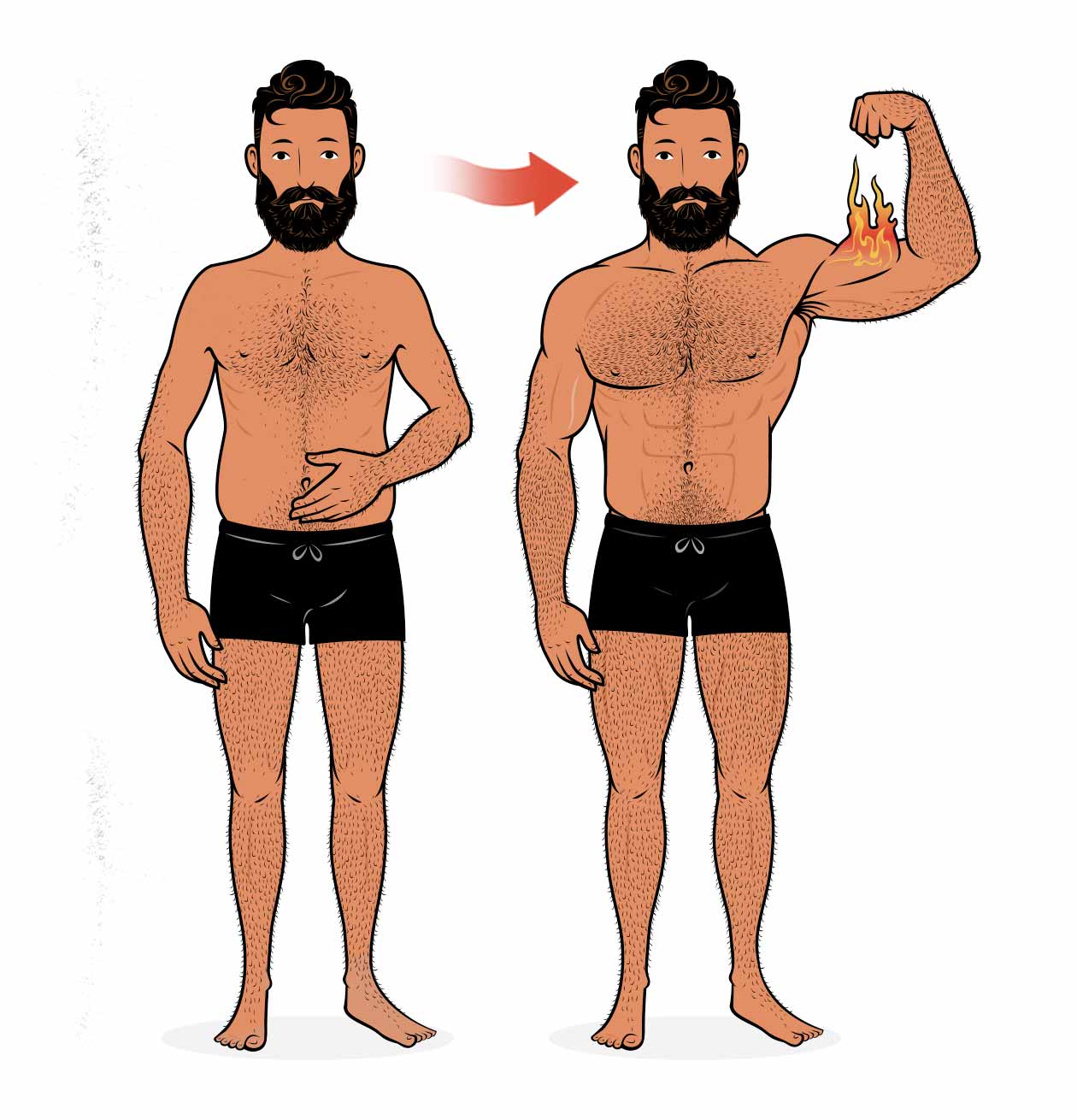
What is Sedentariness?
Sedentary is a fancy way of referring to the amount of time we spend sitting. In the research, though, it’s used a little bit more broadly, referring to periods of time when we don’t burn many calories. That means that sitting, lounging, and lying down all count as being sedentary.
If we look at the exercise guidelines given by the World Health Organization, we get a recommendation to do at least 1.25–2.5 hours of exercise per week, depending on how intense that exercise is.
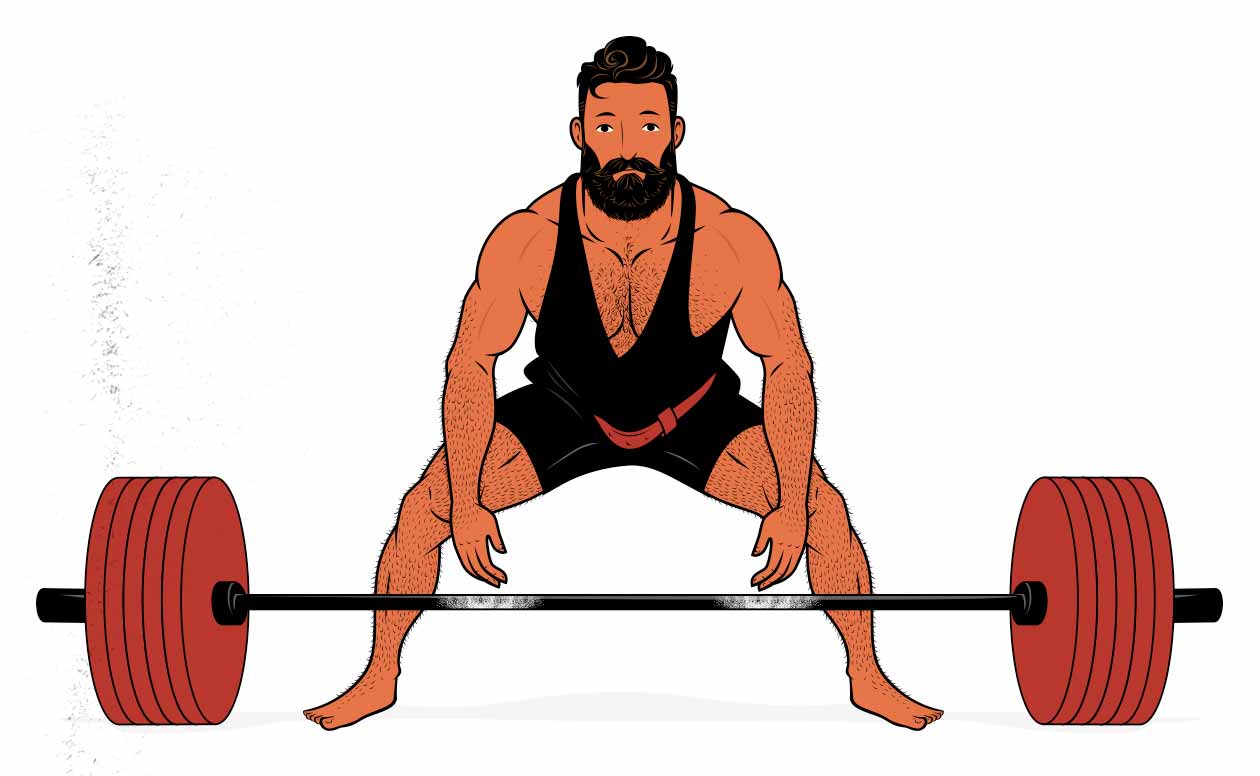
The thing is, as more research is done, it’s becoming clear that the amount of exercise we do is separate from the amount of time that we spend sedentary. Even if you exercise, how much time you spend sitting vs walking can still have an impact on your muscle growth and fat loss.
What I mean is, even if you exercise, it’s still possible to be considered sedentary. So in addition to exercising, we need to make sure that we’re spending enough time on our feet. One way to do that is to spend more time standing, but an even better way seems to be spending more time walking.
How Much Does Walking Affect Body Fat?
Eric Trexler, PhD, founder of the Monthly Applications in Strength Sports research review, crunched the numbers from a study looking at how sedentariness affected body composition in various athletes. He found that sedentariness was responsible for around 4% of the body-fat differences between athletes.
Looking at these numbers, the body composition researcher, Eric Helms, PhD, said, “Now that’s not nothing, but it also shows that other factors like training, nutrition, sleep and genetics play much larger roles.” And that’s a good point. These are not huge numbers. If you want to build muscle and lose fat, walking is one of the finer details, not the foundation.
On the other hand, the differences in fat were largely in visceral fat (aka trunk fat), the fat that wraps around our organs. This is the type of fat that’s most strongly associated with poorer health outcomes. By reducing our visceral fat, we can improve our health. Walking is great for that, and the body composition benefits come as a welcome bonus.
How Much Does Walking Affect Muscle Growth?
Dr Trexler’s analysis of the above study found that 3% of the differences in muscle mass between people can be explained by how sedentary they are. That roughly lines up with the differences in fat, meaning that even if you don’t lose or gain weight, it’s reasonable to assume that walking should help you become slightly leaner and more muscular.
Again, compared to other factors, such as lifting weights, diet, sleep, and genetics, it’s not a huge factor. But it’s something, and it comes along with several other benefits, most notably improved overall health.
How Many Steps Should You Take Per Day?
If we look at a couple different studies, it seems that getting at least 7,000 steps per day seems to result in the best health outcomes and body composition, including more fat loss, more muscle mass, better heart health, and better adaptations from working out (study, study).
My business partner, Jared, is a desk worker, he’s a dad with 3 young kids, and he lifts weights 3–5 times per week. He was averaging 2,000–3,000 steps per day. Even with kids running around the house, even with regular exercise, he was only walking half as much as he should have been.
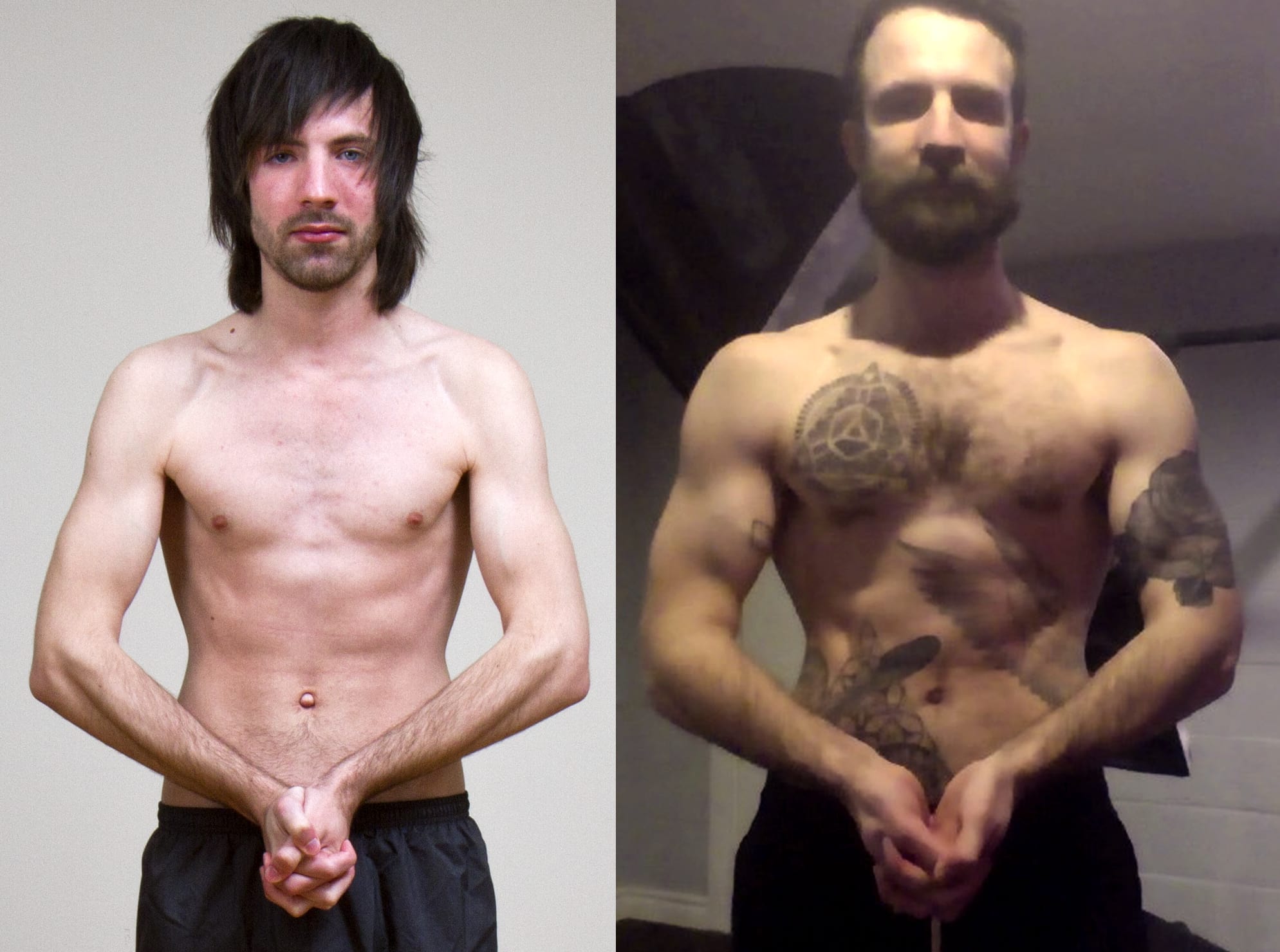
I also work a desk job, I’m also a dad (with a toddler), and I lift weights 3 times per week. But I also have a dog that I walk in the morning and evening. That 10-minute walk in the morning combined with a 20-minute walk in the evening brought my daily step count up to 6,000 steps per day. And by extending my morning walk to 15–20 minutes, I was able to routinely get 7,000 steps per day.

My wife is on still on maternity leave, she spends the day hanging out with our son, runs errands, and manages stuff around the house. Without adding in any extra walking, she was already getting 5,000–8,000 steps on an average day, with more like 9,000–14,000 on weekends. She because she already spends so much time on her feet, she isn’t sedentary and doesn’t need to offset her lifestyle with extra walks.

For another example, my wife and I took a brisk 30-minute walk to the beach, read for an hour, and then walked back home. That hour of walking gave us around 10,000 steps. These extra steps can then be averaged into the week. So although daily steps are important, if you have some extra time on the weekends, that’s a good way to boost your weekly average.
In the past, one of my favourite ways to walk was to pop in some headphones and listen to audiobooks while walking to the gym, getting groceries, or walking around town. It was an enjoyable way to get things done while also getting some good walking in.
This lines up with the research. Dr Eric Helms recommends that people who spend a lot of their time sitting add in at least 40 minutes of walking per day. He also recommends splitting that 40 minutes up into two separate walks. So, for instance, maybe that’s a 20-minute walk in the morning and then another 20 minutes in the evening. Not only would that give you enough daily steps, but you’d also get a bit of sunshine in the morning and evening, helping you to get enough vitamin D.
What’s the Best Way to Measure Your Steps?
A pedometer is a device used to measure how many steps we take. When I told my wife that I wanted one, she squinted at me and told me that it was a dumb idea. I was confused. I explained that a pedometer would help us figure out if we’re taking enough steps per day to be healthy. Then it was her turn to be confused. “What does measuring farts have to do with how many steps we take?”
These are the sorts of misunderstandings that can happen when living in Mexico. Not so different from when she would call our son her “pedacito” and I thought she was calling him her “little fart.”
Anyway, this whole idea that we should be walking a given number of steps per day is coming from studies that use pedometers, meaning that if we measure our steps the same way, we can be confident that we’ll get the same outcomes.
There are pedometer apps that you can download on your phone, and those are certainly better than nothing, but none of them are as accurate as a dedicated pedometer. I chose this simple iGANK pedometer (affiliate link). It’s only $17.
Summary
By making sure that we’re spending enough time walking, we can improve our muscle growth, fat loss, and health. 7,000 steps per day is probably enough to get all of those benefits. If you’re active during the day, you may exceed that step count already. For a desk worker, taking two 20-minute walks per day is usually enough.

The next thing to keep in mind is that sedentariness is a relatively minor factor in determining our body composition, explaining just 4% of the differences in body fat between people, just 3% of the muscle mass. If you want to lose fat and gain muscle, the most important things are:
- Following a resistance training program that stimulates muscle growth, ideally hypertrophy training.
- Eating the correct amount of food. If you’re trying to gain muscle, eat enough food to gain weight. If you’re trying to lose fat, eat in a calorie deficit so that you lose weight.
- Eating enough protein. 0.8–1 grams of protein per pound body weight per day is a good minimum when trying to gain/maintain muscle mass. So for someone weighing 180 pounds, that’s at least 144–180 grams of protein per day.
- Getting enough good sleep. Getting at least 7–9 hours of good sleep each night is an important part of building muscle and losing fat.

If you want a customizable workout program (and full guide) that builds in these principles, check out our Outlift Intermediate Bulking Program. Or, if you’re still skinny or skinny-fat, try our Bony to Beastly (men’s) program or Bony to Bombshell (women’s) program. If you liked this article, you’d love our full programs.




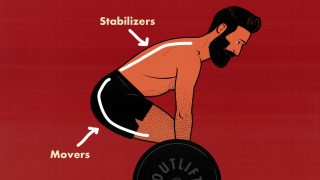
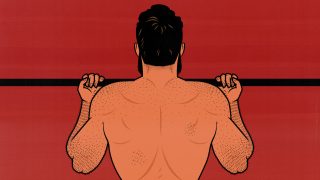
I can’t imagine not starting off my days with a 30-minute brisk walk. I feel so much better throughout the day and don’t get why it isn’t a more widespread practice. Especially for those sitting behind a computer all day long.
I routinely get in more dan 10k steps a day (morning walk, grocery store, meeting people). I guess what helps is that I grew up in a family where walking was the norm. If that isn’t the case, I can imagine it doesn’t come to you as naturally.
Anyway, our bodies are built for walking long distances. It’s how we hunted. Barely walking goes straight against your own biology.
Thanks for the article, Shane! Hope all is well with you in Mexico.
Hey Joost! Glad to hear from you, man!
I totally agree with you. Starting my day by walking the dog is an enjoyable way to wake up. Some of my earliest memories are of my dad walking me to my elementary school each morning. And with my wife, right from when we first started dating, going on long walks was one of our favourite things to do together. We’d walk for 40 minutes to a restaurant or movie theatre, chatting on the way there and back. And as weird as it sounds to some people, walking to the grocery store and carrying bags home has been one of my great joys in life.
As for why more people don’t do it, you’re raising a good point. I could imagine a lot of people just not being used to it. Or maybe having fallen out of the habit, and now they can’t find the time/energy for it.
Mind you, back when I was living in Canada, there were definitely some dark, cold winter days when the last thing I wanted to do each morning was go outside first thing in the morning. If I hadn’t had a dog, I probably would have skipped the walk. And then some people just don’t live in great neighbourhoods for it. If the neighbourhood is dangerous, going out for a walk is stressful instead of relaxing. And some places aren’t built for being outside, with crappy sidewalks, no ramps for strollers, no crosswalks, no bike paths, no parks.
I hope you’re doing well, too 🙂
You’re right, location does matter loads! I lived in Manila for 4 years where taking even a short stroll was a pretty horrible experience due to the pollution. Your lungs would feel all clogged up after walking more than 10 minutes.
And having a bit of sun vs harsh winters indeed makes all the difference. 🙂
Great article.
I just spent half of my 10 days long vacation walking (5 days). The rest was snowing. On the 1st day I walked 31,272 steps (23.83km) and in the 5 days, I walked 105,446 steps (80.35km) total 🙂
I use only my phone to track steps. I do not have a pedometer on the wrist so I do walk a lot more, it just does not count as I do not have the phone on me at all times.
Luckily I love walking. Even on working days I usually managed to walk 8000 – 10K steps when I focus on it. I usually take 3 walks a day just to relax.
On average I walk some 6000 / day when just go shopping and whatnot.
And on really slow days or when there is not much to do or the weather is awful I still manage to get some 2000 steps at least.
80km! Damn, DanielK, that’s awesome! And 6–10k per day most days sounds perfect 🙂
80km was nice for sure 🙂
I want to be more to nature again. COVID year helped me with that, to appreciate the outdoors more.
I really love walking/hiking. I was in boy scouts for 10 years, and scout leader as a teenager for 2 years when I was 14 – 16yo, leading and teaching younger kids.
We would spend every 2 weeks in a month on full weekend trips. Each summer we spent 3 weeks in our camp, outside cities, in highlands, forests, hills only, doing hikes and trips.
I remember when I was some 13yo, we did a 60km hike in 7 days, sleeping outdoors. That was always our final week at the camp, spending it in nature 🙂
Thanks for the article Shane. As is so often the case, your research has landed in my inbox at exactly the right time. I’ve been noticing my body composition changing over the last few months as my work has transitioned to more sedentary-based practices. I feel called out by the accompanying cartoons. Time to get a fart counter!
Ahahaha, happy to help!
Hey Shane, thanks for the interesting article – quite topical too given that so many of us are working from home.
I had a question to double check I understood the estimates of the impact of sedentariness on body composition. The study you mention suggests that a sedentary person tends to have 4% more body fat and 3% less muscle mass.
So let’s take a guy who is active, weighs 200lbs and has 10% body fat (so he has 20lbs of fat). If he becomes sedentary, is his body fat percentage likely to increase to around 10.6%?
Assuming my back of the envelope calculation is correct, agree with you that being active is not a key differentiator for body composition, although it does have a bit of an impact. And of course the positive impact on health is even more important.
Thanks!
Fabrizio
If I understand it correctly, sedentariness explains about 4% of the differences in body fat between people, whereas lifting might explain 25% of the difference, protein another 15%, overall nutrition another 15%, sleep another 20%, and genetics another 20% (with those numbers being total guesses). So it’s not QUITE what you’re saying. It’s comparing different people, not the same person in different conditions. But I think your inference is correct. The magnitude of the effect is likely something in the neighbourhood of going from 10.6% to 10% body fat by adding in walking (or vice versa), yeah.
Also keep in mind that this is for athletes, so people who are already active in other ways. These guys work out, run drills, play sports. So my guess is that for people who are less active, the effect of adding in more physical activity, such as walking, might be larger. That’s just me making a guess, though.
And you know what, now that you’re asking me these questions, maybe I can reach out to some of these researchers or research reviewers to get their opinions.
Yep that would make sense about the different effect on athletes vs less active people. Sounds good, if you reach out to the researchers with these questions let us know what they say!
Hi Shane, thanks for the article. I was wondering if other forms of physical activity have the same effect. For example if I cycle everyday do I get the same benefits as walking?
I’d expect similar benefits from cycling, yep! The study looked at sedentary behaviour vs being active. Any sort of activity counts.